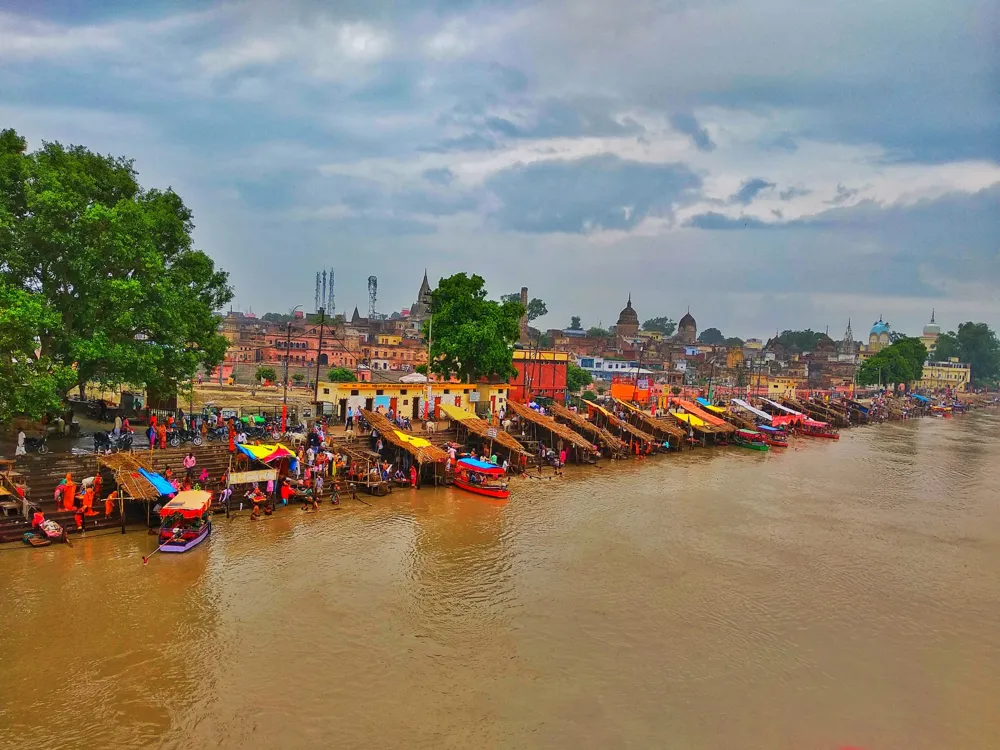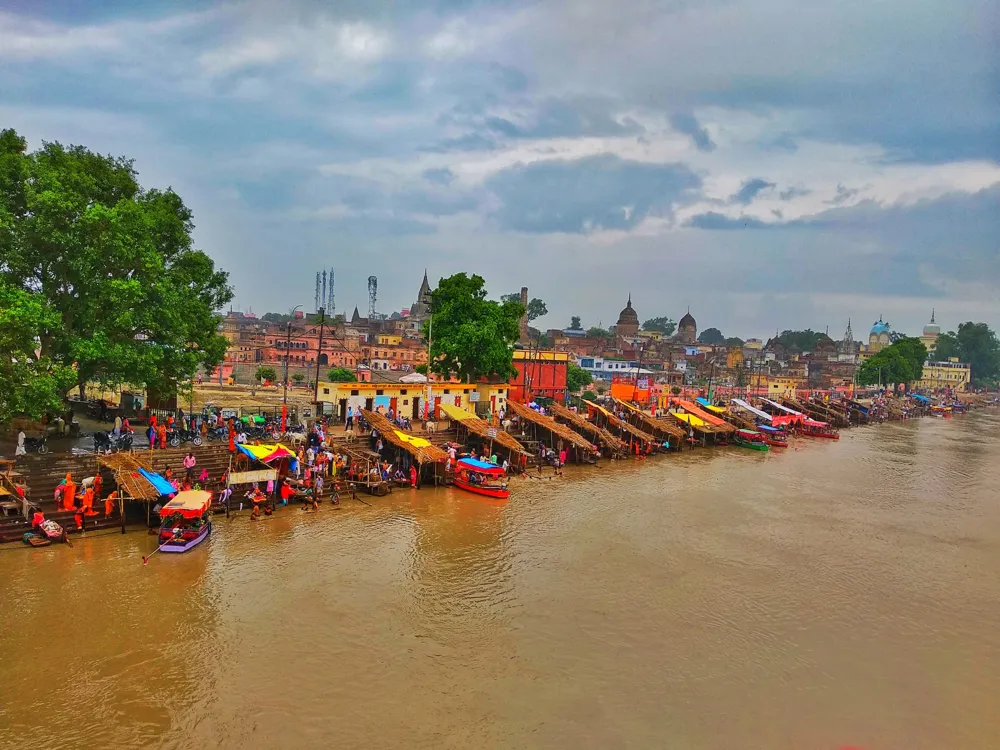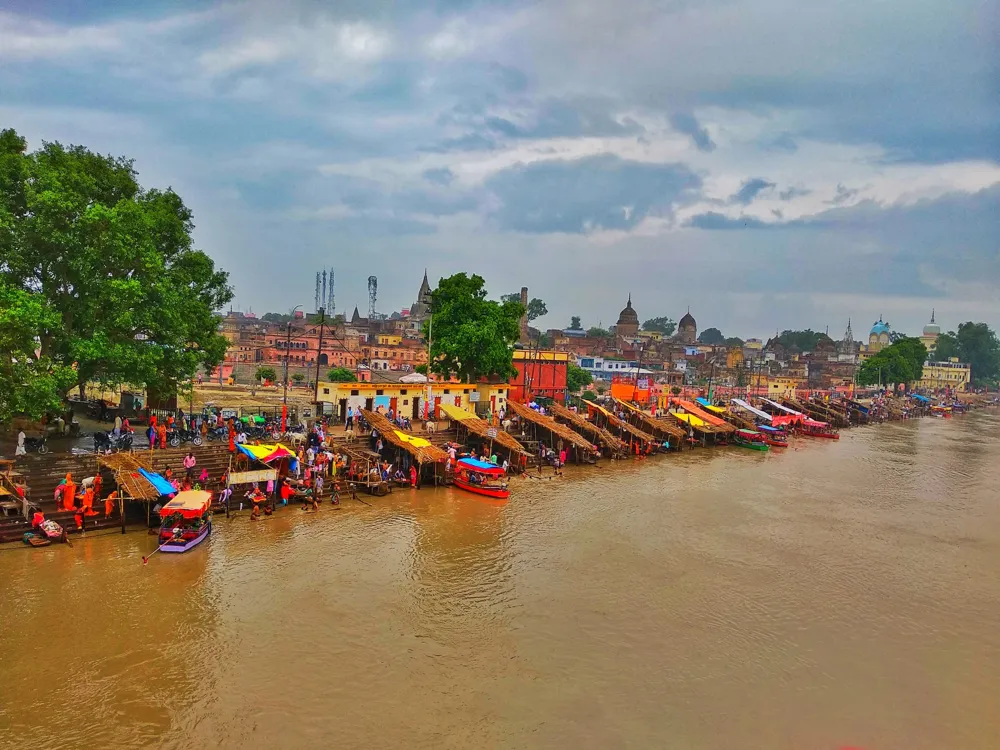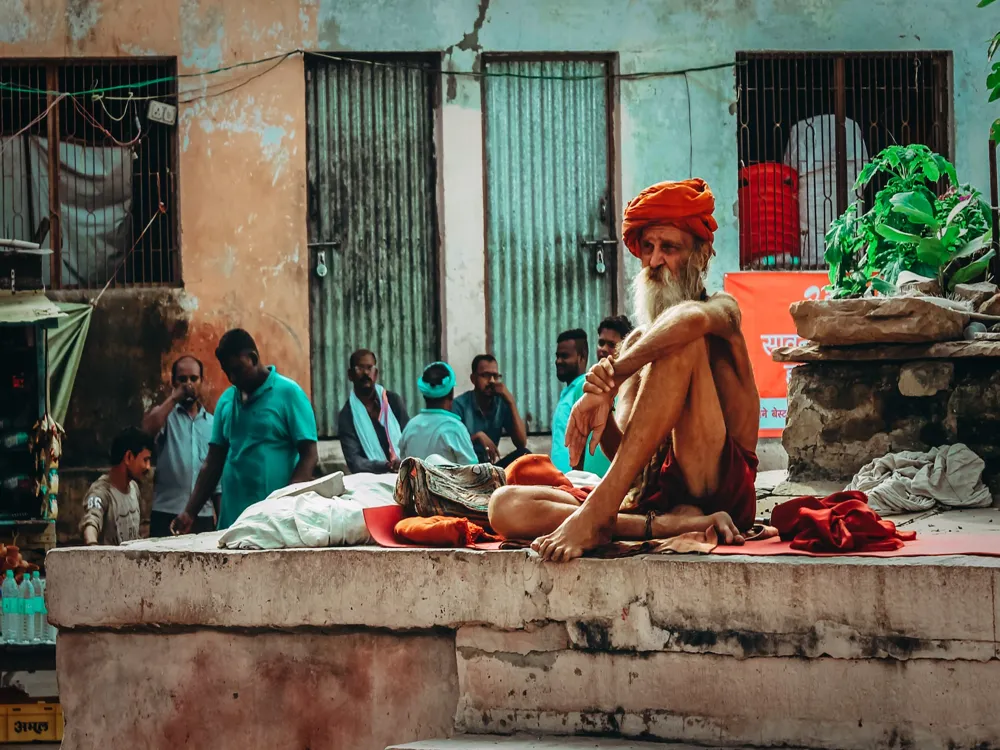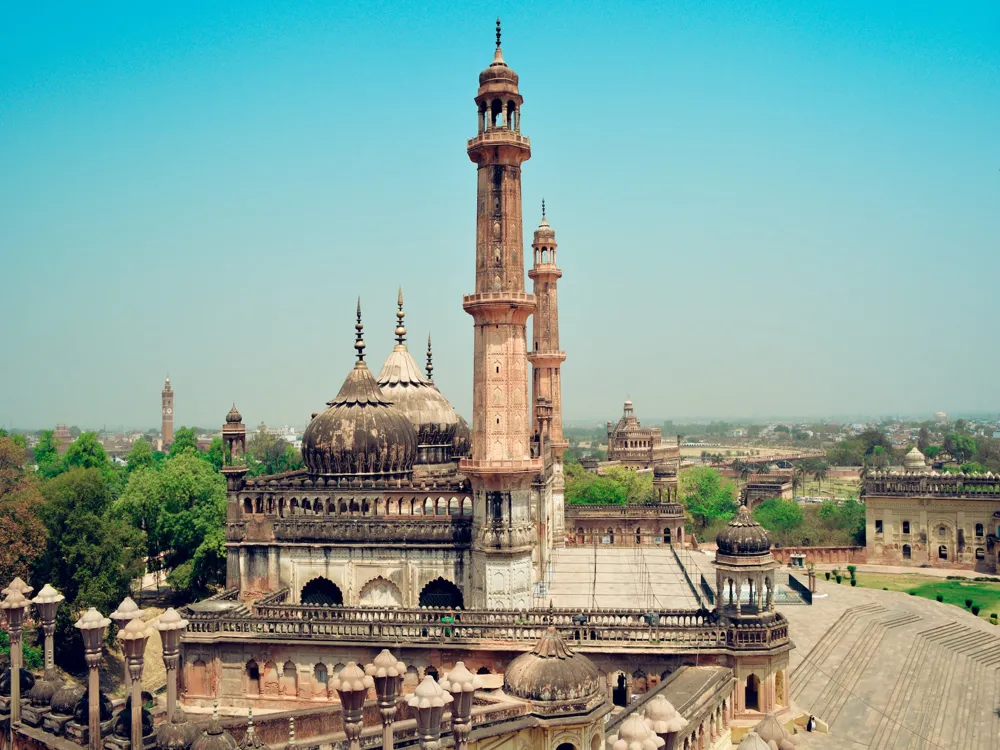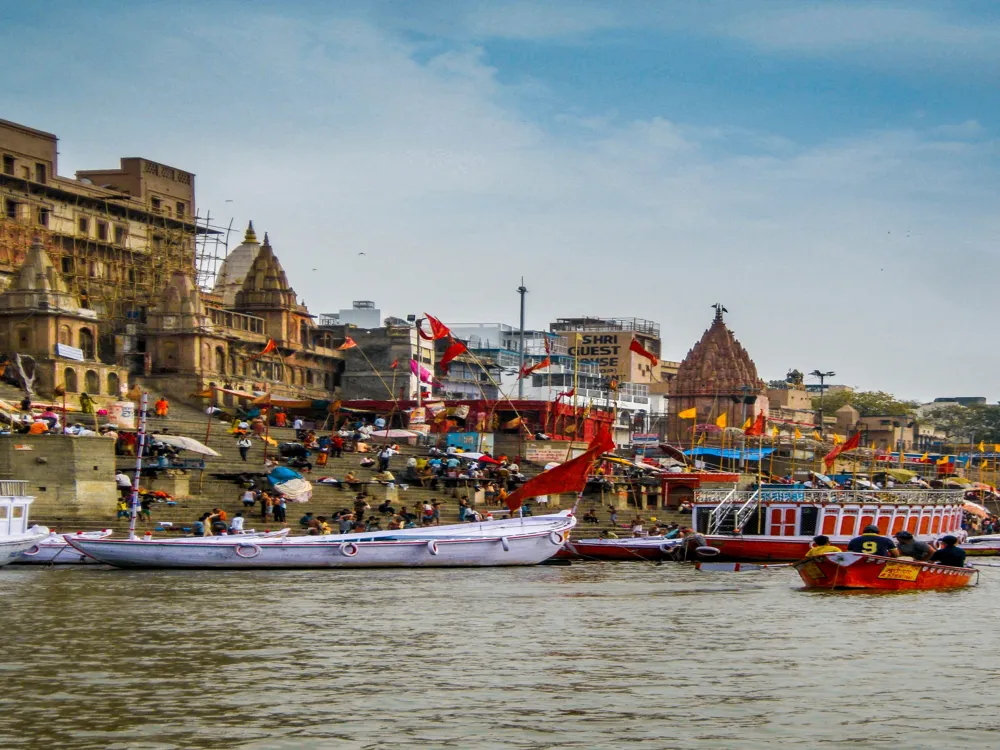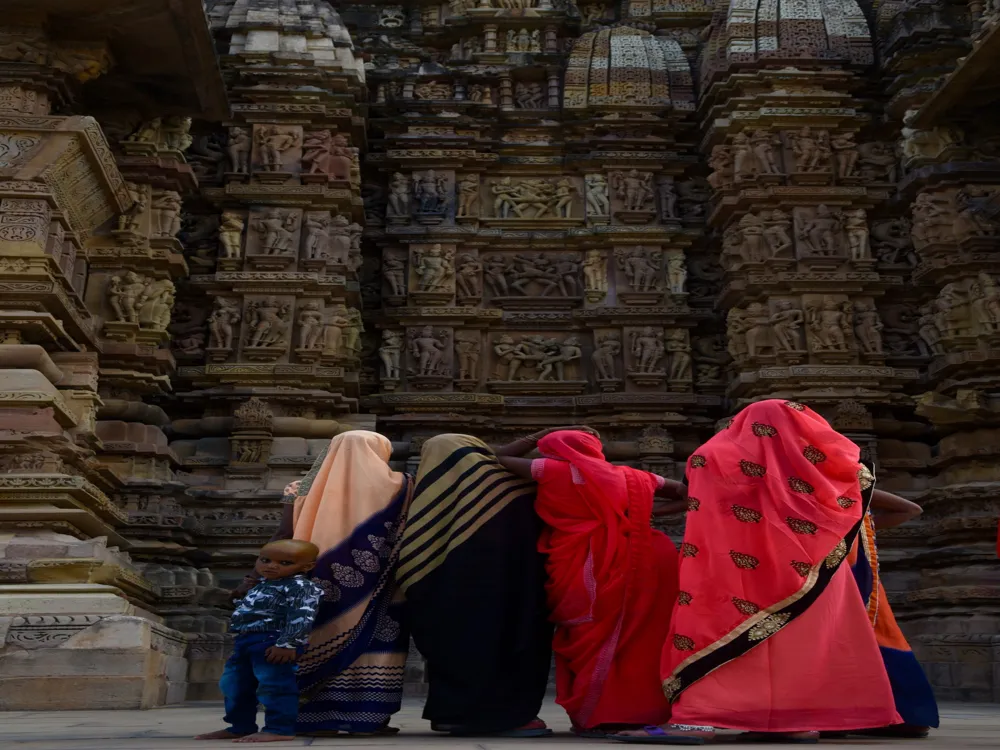The Gulab Bari, rephrasing to' Garden of Roses', in Ayodhya, Uttar Pradesh, is a remarkable illustration of the rich artistic and literal shade of India. This majestic theater, enveloped in a serene air, holds a significant place in the hearts of both locals and excursionists. Its history dates back to the 18th century, during the rule of Nawab Shuja-ud-Daula. It serves not only as a stunning theater but also as the tomb of the Nawab and his mama. The theater's alluring appeal lies in its lush verdure, interspersed with vibrant blooms and the gentle aroma of roses, which gives it its name. The armature of Gulab Bari is a harmonious mix of Mughal and Nawabi styles, reflecting the cultural and artistic influences of its time. The theater layout is evocative of the classic Mughal charbagh structure, where pathways and water channels divide the space into quadrants. At the center of this symmetrical arrangement stands the tomb of Nawab Shuja-ud-Daula, an embodiment of architectural splendour. Gulab Bari in Ayodhya is well connected by road and rail. The nearest road station is Ayodhya, which is well-serviced by trains from major metropolises in India. For those traveling by road, Ayodhya is easily accessible through state and public roadways. Original transport like hacks and bus cabs are readily available for the short trip from Ayodhya megacity to Gulab Bari. For callers flying in, the nearest airport is in Lucknow, from where Ayodhya is a 2-hour drive. READ MORE:-Gulab Bari of Ayodhya, Uttar Pradesh: A Historical Overview
Gulab Bari stands as a testament to the rich heritage of the Nawabi period in Ayodhya, showcasing the architectural brilliance and aesthetic sensibilities of the time. This point has been declared a defended monument by the Archaeological Survey of India, ensuring its preservation for future generations. Its literal significance is further heightened by its proximity to other famed spots in Ayodhya, a megacity steeped in mythological and religious significance.Architecture of Gulab Bari: A Blend of Mughal and Nawabi Styles
The hall, with its domed roof and intricate flowery motifs, is a masterpiece of Indo-Islamic architecture. The fine stucco work and detailed busts on its walls and pillars reflect the professed artifice of the crafters. The emulsion of red sandstone and marble in the construction adds to its visual appeal, creating a striking contrast against the green herbage of the auditoriums. The large, arched doorways and windows of the tomb allow natural light to sludge in, creating an air of peace and tranquility.Tips When Visiting Gulab Bari
Best Time to Visit
The ideal time to visit Gulab Bari is between October and March, when the weather in Ayodhya is pleasant, and the roses are in full bloom, offering a breathtaking view.Dress Code and Etiquette
Visitors are advised to dress modestly, keeping in mind the cultural and religious sentiments associated with Ayodhya. It is also recommended to maintain a quiet demeanor to respect the sanctity of the mausoleum.Photography Guidelines
While photography is allowed in the theater area, callers should check for any restrictions regarding photography inside the tomb to admire the point's sanctity.Accessibility and Facilities
Gulab Bari is fluently accessible for all age groups. Still, callers with mobility issues should note that certain areas may not be wheelchair accessible. introductory installations like restrooms and drinking water are available on site.How To Reach Gulab Bari
Gulab Bari
Ayodhya
Uttar Pradesh
₹ 9,500 onwards
View ayodhya Packages
Weather :
Tags : Garden & Park
Timings : 4:00 AM to 7:00 PM
Entry Fee : None
Planning a Trip? Ask Your Question
Ayodhya Travel Packages
View All Packages For Ayodhya
Top Hotel Collections for Ayodhya

Private Pool

Luxury Hotels

5-Star Hotels

Pet Friendly
Top Hotels Near Ayodhya
Other Top Ranking Places In Ayodhya
View All Places To Visit In ayodhya
View ayodhya Packages
Weather :
Tags : Garden & Park
Timings : 4:00 AM to 7:00 PM
Entry Fee : None
Planning a Trip? Ask Your Question
Ayodhya Travel Packages
View All Packages For Ayodhya
Top Hotel Collections for Ayodhya

Private Pool

Luxury Hotels

5-Star Hotels

Pet Friendly







